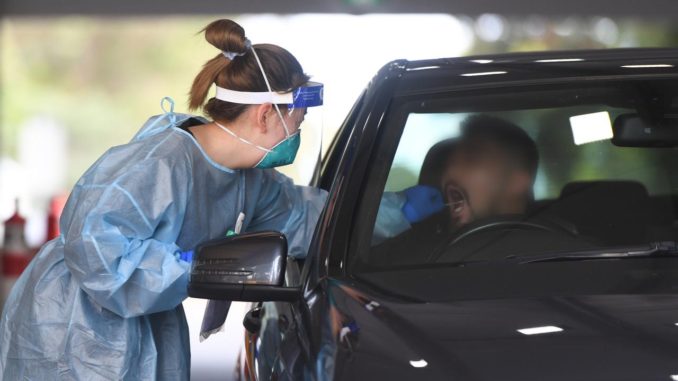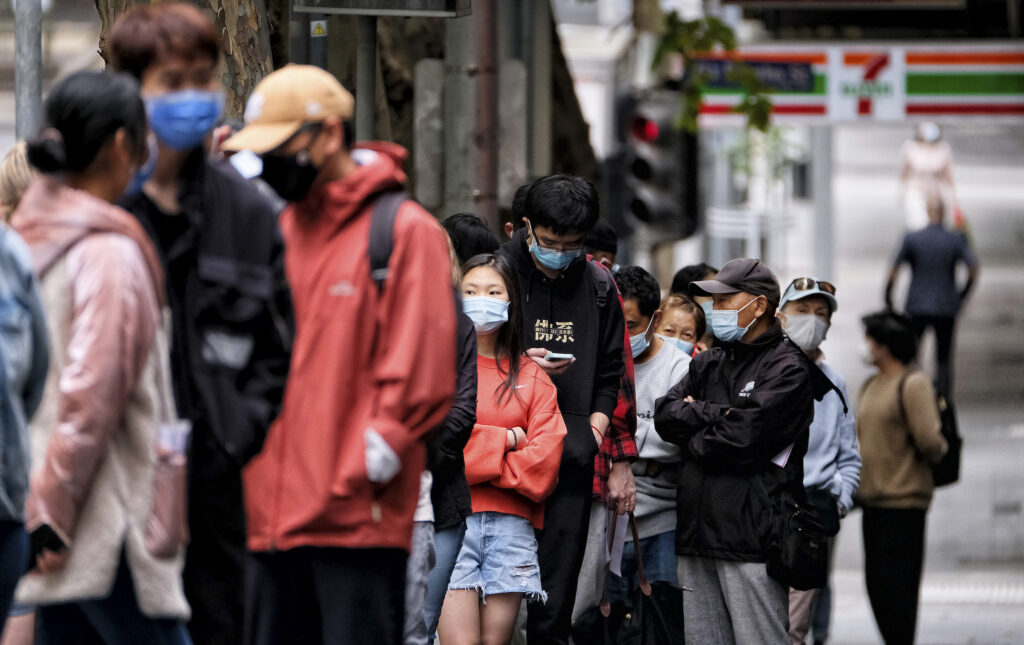
MELBOURNE, Australia — More than 200 Victorians have been told to get tested for Covid-19 after “strong and unexpected” fragments of the virus were detected in wastewater.
Some 246 people in Melbourne’s western and northwestern suburbs have been contacted by authorities and told to get tested as a precaution.
“This additional action is being taken due to the strength of the wastewater detection and because a known positive Covid-19 case, from flight QF778, has been in Victoria in the past 14 days,” the health department said on April 29.
The 246 people contacted include four close contacts of the positive case and 242 recently returned red and orange zone travel permit holders.
They have all recently returned negative results, but the department wants them to get tested again “out of an abundance of caution”.
“It is most likely that these new detections are due to a person or persons continuing to shed the virus after the infection period,” it said.
“However, it could also be due to a person living in or traveling through the area in the early active infectious phase.”
Covid-19 fragments detected in the Victorian Wastewater are numerous. The list is as follows, northwestern suburbs Glenroy, Hadfield, Oak Park, and Pascoe Vale between April 20 and 27; Benalla between April 10 and 15 and 20 and 26 (repeat detections); western suburbs Altona, Altona North, Brooklyn, Newport, South Kingsville, Williamstown and Williamstown North between April 20 and 27.
Northern suburbs Briar Hill, Bundoora, Diamond Creek, Greensborough, Lower Plenty, Macleod, Mill Park, Montmorency, Plenty, South Morang, St Helena, Viewbank, Watsonia, Watsonia North, Yallambie, and Yarrambat between April 20 and 27.

Other places include outer eastern suburbs Chirnside Park, Coldstream, Kalorama, Lilydale, Montrose, Mooroolbark, Mount Dandenong, Mount Evelyn, Olinda, Yarra Glen, and Yering between April 20 and 26; western suburbs Albanvale, Burnside, Burnside Heights, Cairnlea, Caroline Springs, Deer Park, Delahey, Hillside (Melton), Keilor Downs, Kings Park, Plumpton, Ravenhall, Sydenham, Taylors Hill and Taylors Lakes between April 18 and 26.
Northwestern suburbs Avondale Heights, Calder Park, Hillside (Melton), Kealba, Keilor, Keilor Downs, Keilor East, Keilor Lodge, Keilor North, Keilor Park, Sydenham, and Taylors Lakes between April 18 and 26
Apart from that, the variants were found in the eastern suburbs Balwyn, Balwyn North, Blackburn, Blackburn North, Box Hill, Box Hill North, Bulleen, Doncaster, Doncaster East, Donvale, Mitcham, Mont Albert, Mont Albert North, Nunawading, and Templestowe Lower between April 20 and 24; outer northern suburbs Epping, South Morang or Wollert between April 17 and 22.
Wastewater is the used water from households and businesses disposed of through the sewerage network (or into septic tanks in some areas). Wastewater is 99.97 percent water as the majority is sourced from showers, baths, and washing machines. The remainder is dissolved and suspended matter.
(Edited by Vaibhav Vishwanath Pawar and Ritaban Misra.)
The post Australia’s Victorian Suburbs On High Alert For Covid-19 appeared first on Zenger News.
